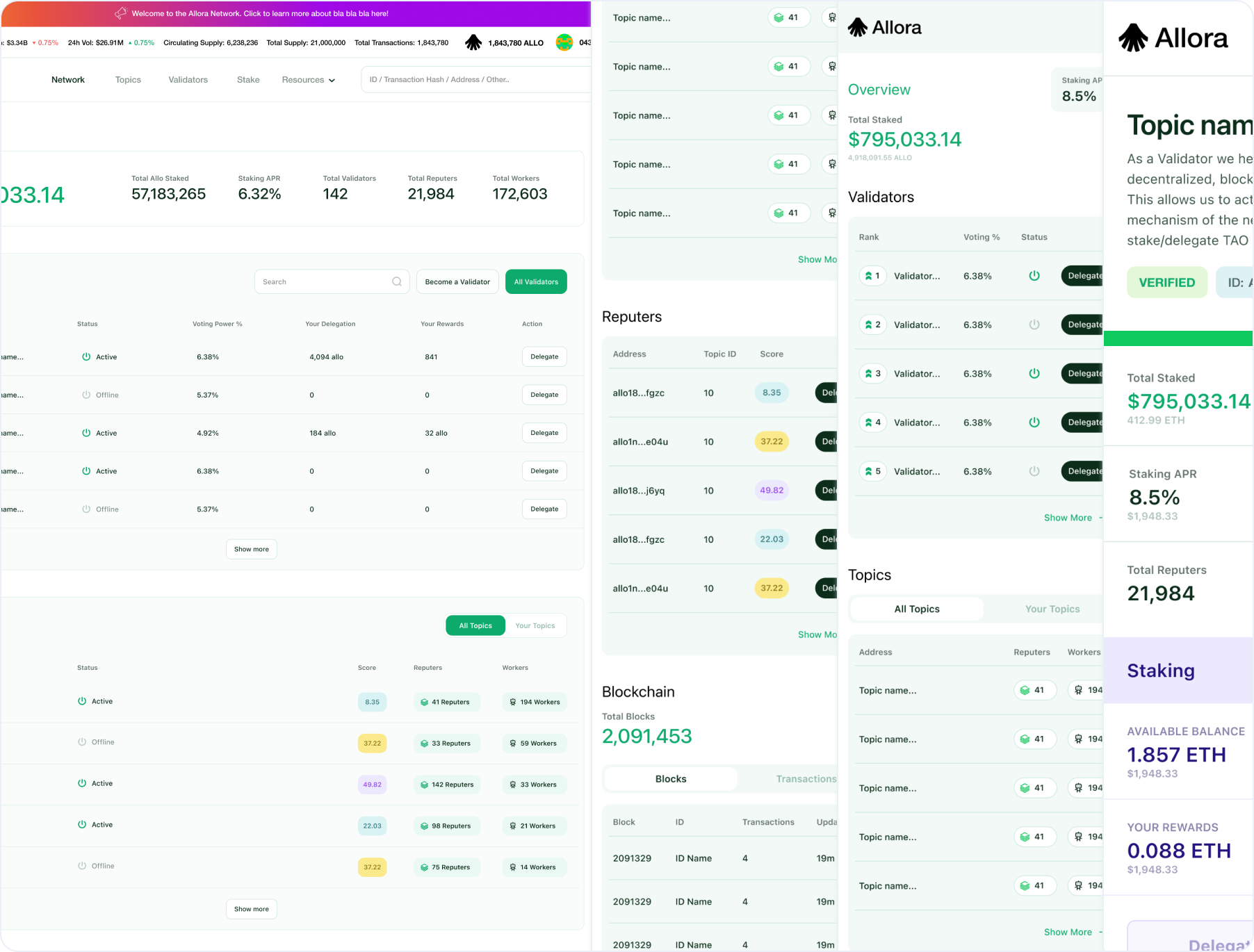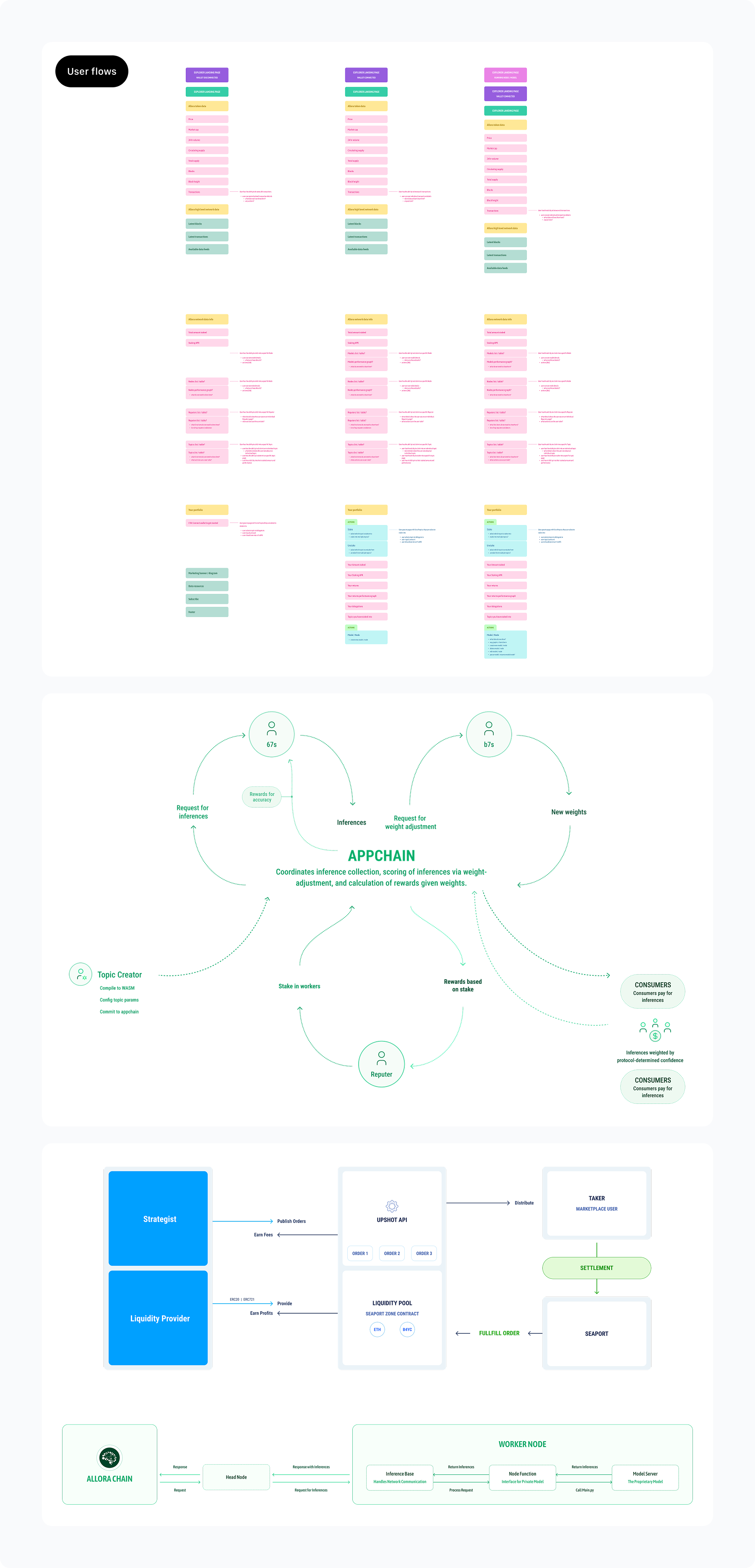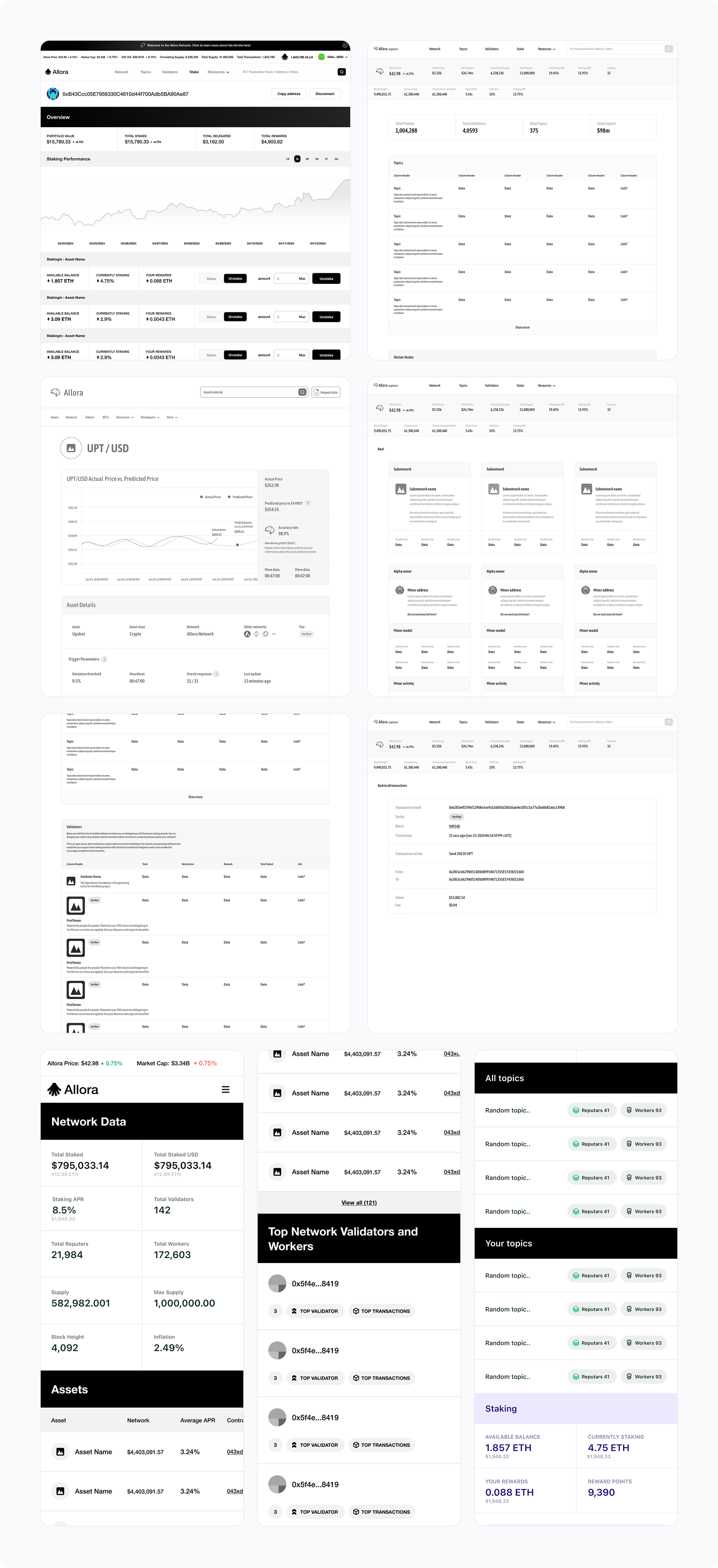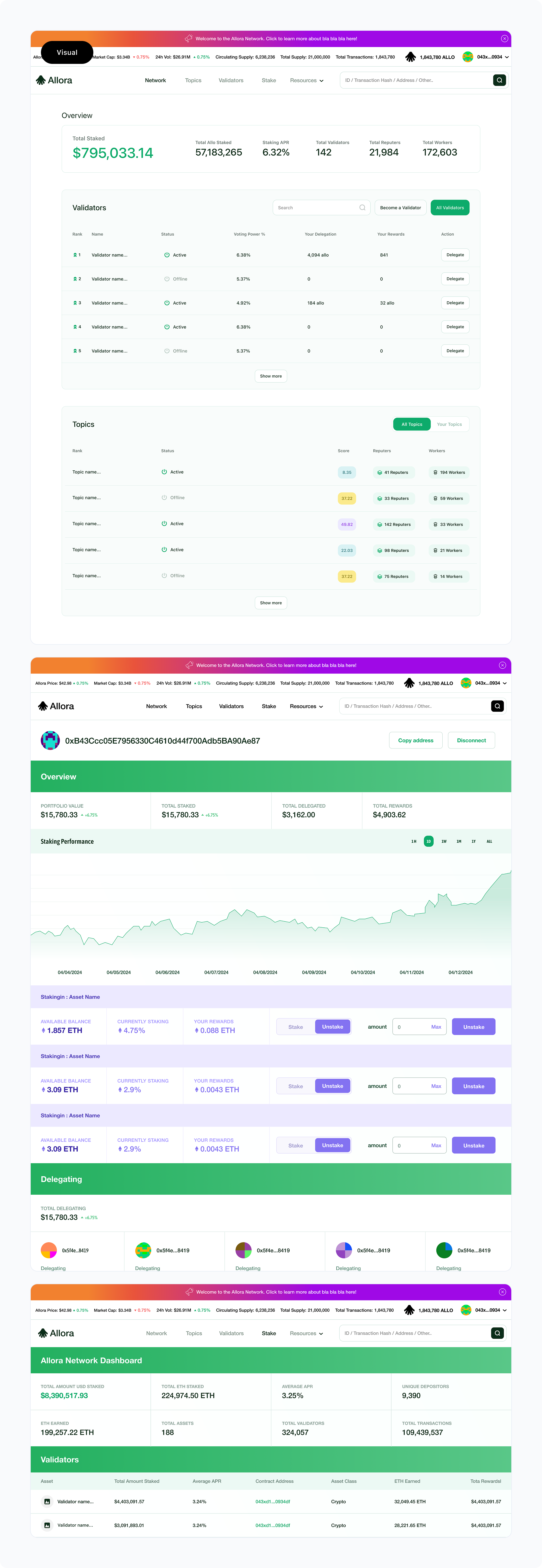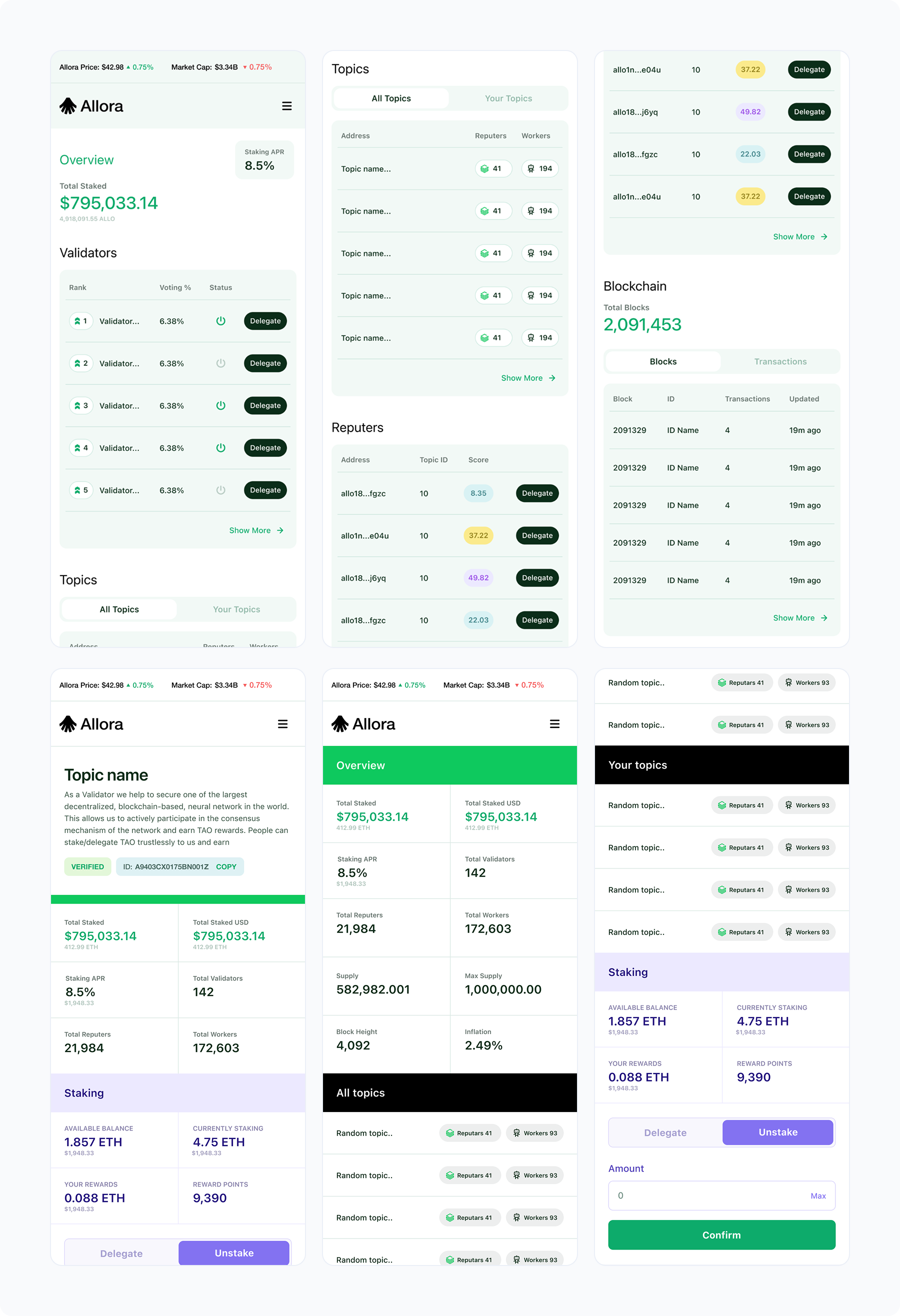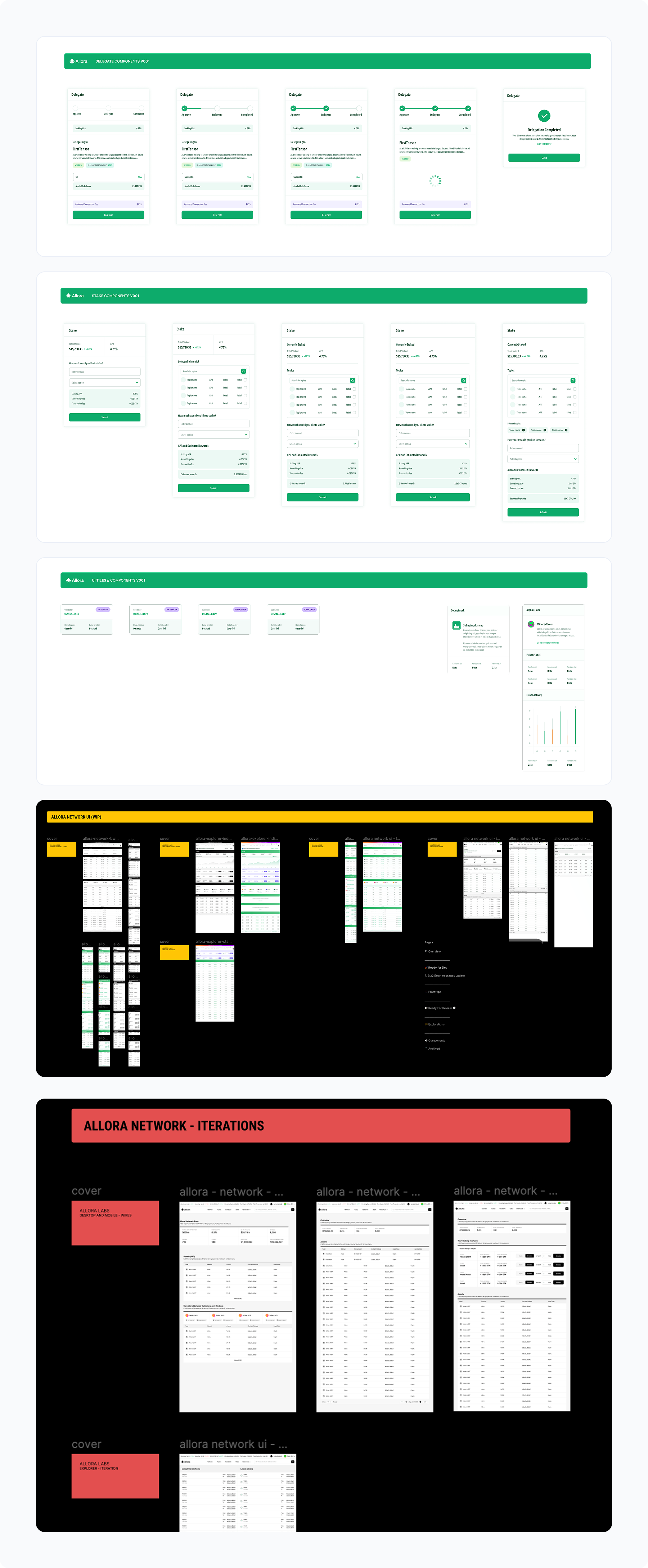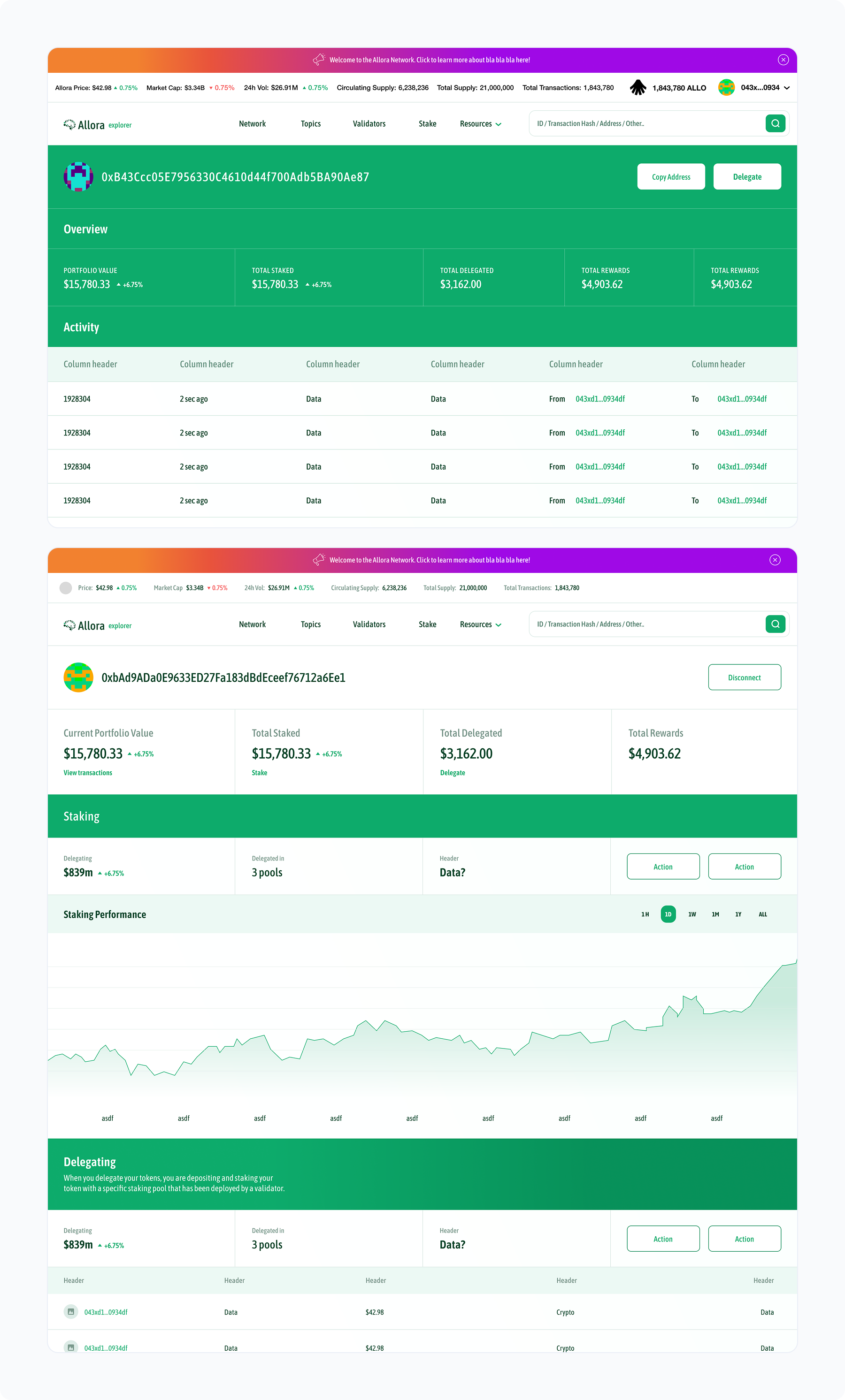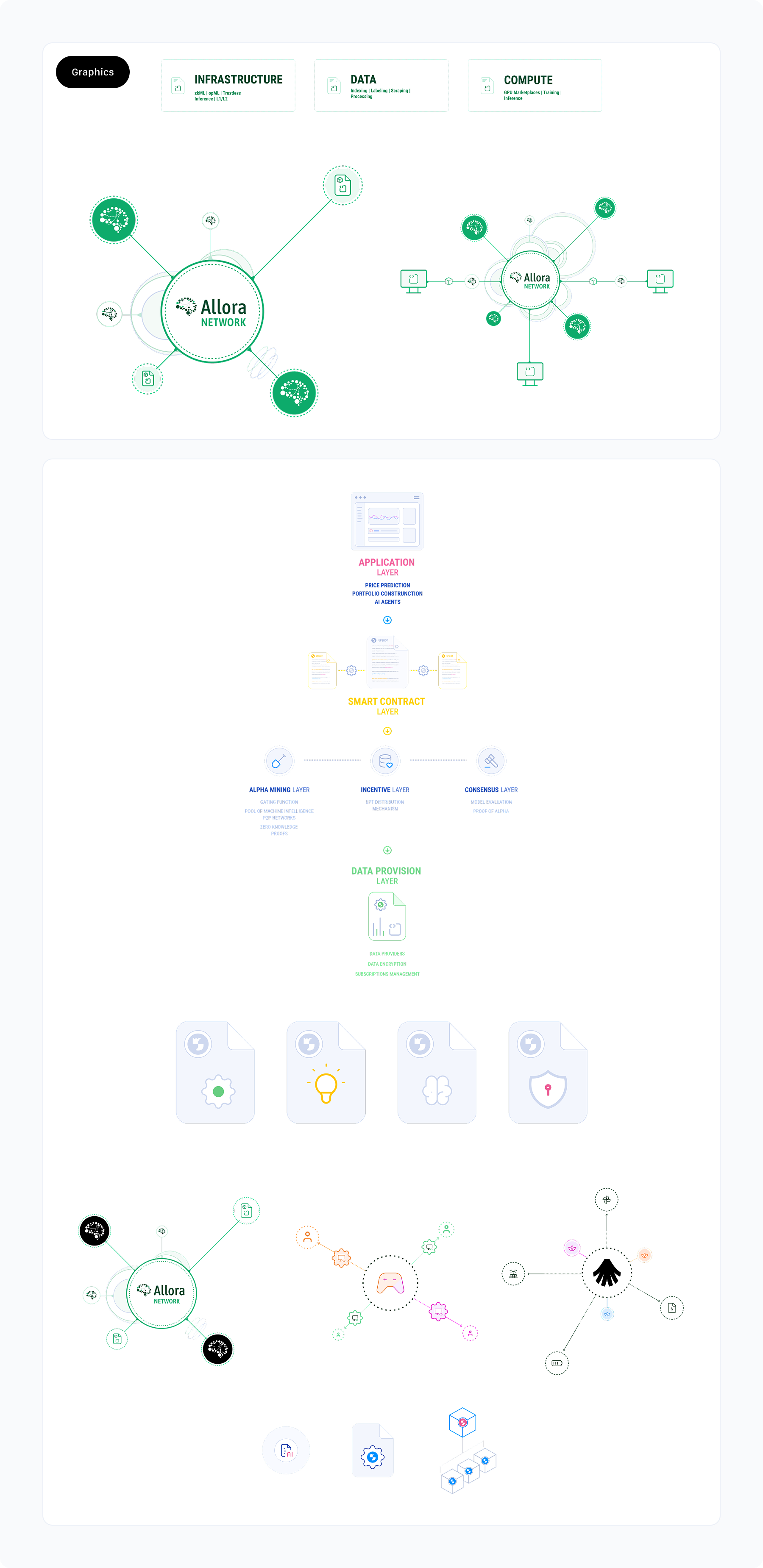Project Background
This case study details the end-to-end product design and release of the Allora Decentralized AI blockchain platform by Allora Labs. The platform is designed and engineered for a collaborative and secure environment for AI model development and data processing. Through its staking mechanisms, Allora incentivizes active network participation, ensures high levels of security, and promotes sustainable growth within the evolving AI ecosystem.
Project Problem
The traditional AI landscape is characterized by several critical issues:
Data Silos:
Proprietary datasets are often isolated, restricting comprehensive innovation and hindering the development of more robust and diverse AI models. This fragmentation limits the collective intelligence achievable.
Centralization Risks:
Centralized AI systems are inherently vulnerable to single points of failure, potential censorship, and significant data breaches, posing risks to data privacy and operational continuity.
Lack of Incentives:
There are limited effective mechanisms to appropriately reward the diverse contributions from AI model developers, data providers, and computational resource providers, leading to underutilization of potential network participants.
Scalability and Trust:
Ensuring the scalability, transparency, and trustworthiness of AI models and their inferences in a distributed, multi-party environment presents a significant technical and logistical challenge..
Project Goal
The primary goals for the Allora Decentralized AI Blockchain Platform project were to:
Democratize AI Development:
Create an open and accessible platform that lowers barriers to entry for AI model development and deployment, enabling broader participation.
Enhance Data Privacy / Security:
Implement robust cryptographic techniques to ensure data privacy and integrity during all stages of AI model training and inference in a decentralized setting.
Foster Collaborative Innovation:
Design a framework that actively encourages and facilitates collaboration among AI researchers, developers, and data providers, leading to more powerful and diverse AI models.
Incentivize Network Participation:
Develop a sustainable economic model (tokenomics) that fairly rewards all contributors for their computational resources, data, and model contributions./p>
Ensure Scalability / Adaptability:
Build a blockchain infrastructure capable of scaling to meet the demands of complex AI workloads and designed to adapt to future technological advancements in both AI and blockchain.
Establish Trustless Operations:
Leverage blockchain's immutability and transparency to ensure that AI models and their inferences are verifiable and trustworthy without reliance on central authorities.
Role & Responsibilities
The project followed a comprehensive and agile end-to-end product design and release methodology, adapted to the complexities of blockchain development:
Process
The design process involved the following key phases:
Phase 1: Research & Conceptualization:
This initial phase involved extensive market research into existing AI and blockchain solutions, competitive analysis, and the development of a foundational whitepaper. Core use cases were defined, and the technical feasibility of decentralizing AI was rigorously assessed.
Phase 2: Architectural Design and Wireframes:
Focused on the detailed design of the blockchain architecture, selection of the appropriate consensus mechanism, smart contract design, and the definition of integration points for various AI models and data sources.
Phase 3: Prototype Development & Testing:
Building a Minimum Viable Product (MVP) to test core functionalities, including basic staking, model submission, inference capabilities, and data access. This phase involved rigorous internal testing, iterative development, and extensive bug fixing to ensure core stability.
Phase 4: UI/UX Design & Development:
Focused on the detailed design of the blockchain architecture, selection of the appropriate consensus mechanism, smart contract design, and the definition of integration points for various AI models and data sources.
Information Architecture and User Flows
Wire frames and clickable prototypes to define usability, design and accessibility. These wire frames also helped with internal and external user testing.
Wire frames
Wire frames and clickable prototypes to define usability, design and accessibility. These wire frames also helped with internal and external user testing.
Allora Design Systems and Libraries
Figma Design Systems - Flexible Components
Allora Labs Decentralized AI Network Concepts and Iterations
I put together several different iterations of the main dashboard and several other views to give the team some different ideas, directions and guidance.
Decentralized Infrastructure:
A robust blockchain-based architecture that fundamentally removes reliance on central authorities, providing censorship resistance and resilience.
Collaborative ML Environment:
A suite of tools and protocols designed to enable multiple parties to collaboratively train, validate, and utilize AI models without necessitating the exposure of raw, sensitive data.
Incentivized Participation:
A robust and carefully designed tokenomics model that systematically rewards all network participants, from model creators and data providers to validators and compute resource providers.
Scalability and Adaptability:
FA flexible and modular design that can evolve with the rapid advancements in AI and blockchain technology, supporting a growing ecosystem of AI applications.
